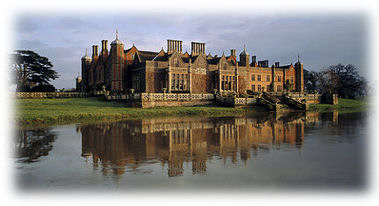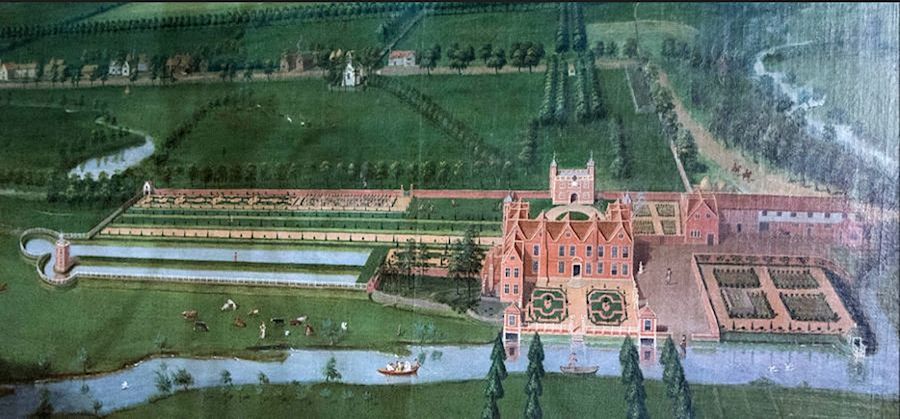Franks Forage No 41 The ‘Bird-eye View’ Painting
This painting is probably studied more than any other in the house at Charlecote. There is so much detail which is emphasised wonderfully on the cover of the new guidebook. Changes to the building and the park obviously took place after the painting was done and prior to the Victorian additions and alterations. The north wing protruding west disappeared and turrets appeared in the near corners. The original building is described as in the form of a half H so I wonder whether that wing was original? Also, one wonders whether the turrets were always there and for some reason the artist left them out? As is known, the formal water gardens went during ‘Capability’ Brown’s landscaping and the lake latter enlarged. Various dates during the 1690s have been given for the painting and the author of the new guide has wisely stated late 17th century. There is a good reason to believe that it dates from c1691. The hatchment on the Gatehouse displays the arms of Davenport Lucy who died at the siege of Limerick in August-September 1690 following the Battle of the Boyne. A hatchment would have been displayed for one year following the death of an arms bearer. The figures in the foreground are probably members of the Lucy family. (Colonel George inherited on the death of his brother Davenport in1690 but he didn’t marry his first wife Mary Bohun till 1697). Depicting the figures on raised ground is a bit of artistic licence. Note the shadowed foreground which helps to make the figures stand out; a feature of this particular artist. So, who was this particular artist? The style points to only one person; Jan Siberechts. Siberechts was born in Antwerp in 1627, the son of a sculptor, also called Jan. He trained in Antwerp and developed a style of landscapes which impressed George Villiers, 2nd Duke of Buckingham who invited him to England. He arrived in c1672 and spent three years painting decorations in the Duke’s new home at Taplow, Bucks. From the mid-1670s to early 1690s he travelled widely in England producing landscape paintings for the aristocracy, most in the ‘birds-eye’ style similar to the Charlecote one. His paintings influenced later landscape painters and he can be regarded as ‘father of British landscape’. His pictures do have historical and topographical interest and the reason why visitors study the one in the Great Hall is for that very reason; one can see how Charlecote and its surroundings appeared in the seventeenth century. Siberechts married Maria-Anna Croes in Antwerp in 1652 and they had two daughters. The family lived in London where Jan died in 1703. Frank Storr.
My thanks to Chris Purvis for information on the hatchment attached to the Gatehouse balustrade.
|


